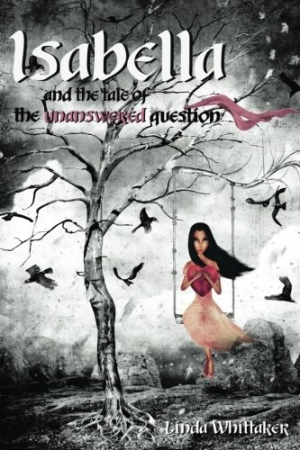Isabella and the Tale of the Unanswered Question
To wake up from her coma, a young woman’s soul must travel through a fantastical kingdom in this twist on the modern fairy tale genre.
Linda Whittaker tackles the dual themes of personal growth and recovery in Isabella and the Tale of the Unanswered Question. In this deceptive fairy tale, a comatose woman hovers on the edge of death while her soul travels through the underworld on a journey that will ultimately force her to decide whether she wants to stay or return to her life.
When a vicious assault leaves an unnamed woman hospitalized and comatose, her family gathers at her bedside in the desperate hope that she will regain consciousness. At the same time, her soul assumes the shape of an eleven-year-old girl named Isabella and travels to a fantastical place called the Lower World. There, she meets several people, including a king who charges her with the task of finding a book. The request sends timid Isabella on a journey that throws many challenges her way. Facing adversity, like traveling through swamps and encountering whimsical creatures such as talking birds and cats, Isabella grows from a child lacking confidence into an inquisitive and resilient young woman. But as she reaches the end of her journey through the Lower World, she must make a choice between returning to the land of the living and staying in the place that has become her home.
Despite the inherent dangers, Isabella’s adventures often proceed at a plodding pace—perhaps in part due to the fairy tale tone. Some of the elements, such as the talking animals and fairies, seem more suited for a younger audience, but the underlying mature themes may escape their notice. The interludes featuring the comatose woman and her family often offer context for Isabella’s travels through the Lower World, so understanding the connection between the two narratives becomes necessary.
Psychological themes pervade Isabella’s tale, making it less a fantastical adventure and more a coming-of-age story. It portrays the pitfalls of childhood and adolescence, from rash decisions to willful refusals, in heavy detail. Isabella’s repetitive choices take on multiple iterations, which slows the pacing even more.
The novel has high production values and few technical issues. The difficult-to-read cover font is the only drawback. Clever formatting clearly delineates which sections take place in the metaphysical Lower Kingdoms and which are set in the hospital.
Although presented as an epic fairy tale, Isabella and the Tale of the Unanswered Question in truth offers insight into the psychological development of a young woman. The psychological allusions, however, add something new to this modern fairy tale.
Reviewed by
Vernieda Vergara
Disclosure: This article is not an endorsement, but a review. The publisher of this book provided free copies of the book and paid a small fee to have their book reviewed by a professional reviewer. Foreword Reviews and Clarion Reviews make no guarantee that the publisher will receive a positive review. Foreword Magazine, Inc. is disclosing this in accordance with the Federal Trade Commission’s 16 CFR, Part 255.

